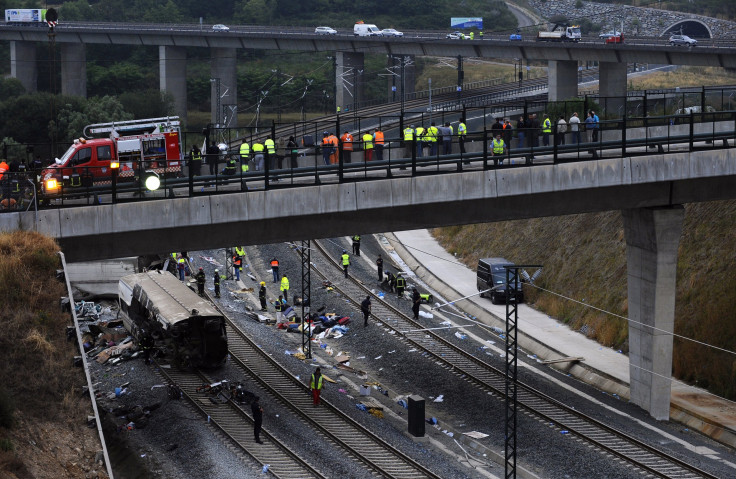Santiago de Compostela Train Accident Belies Exceptional Safety Record For European Rail Travel

Two deadly rail accidents in two week’s time have left many questioning the safety of European train travel, but is there really any cause for alarm?
A preliminary investigation into Wednesday’s accident in Santiago de Compostela, Spain’s worst since 1972, suggested speed, rather than any faulty equipment, may be to blame. The captain is believed to have driven the train as fast as 190 km/h (119 mph) on a curve with an 80 km/h speed limit when the accident occurred, resulting in at least 80 deaths and 140 injuries. Spain has plunged into three days of national morning as investigators probe whether the tragedy was simply a case of human error, or whether there was a fault in systems designed to keep the train at a safe speed.
Prosecutors in France say the July 12 accident that claimed six lives in Bretigny-sur-Orge south of Paris was likely caused by a steel splint that jerked loose and knocked one car off the rails. Track work had been conducted in the area earlier in the month.
Regardless of the causes, experts say the timing of the crashes in Spain and France was a coincidence and not a sign of a larger problem. Indeed, accidents like these belie the rail industry’s impressive safety record. European Union statistics show a 70 percent reduction in accidents from 1990 to 2012, with figures shrinking by about six percent year-on-year in the 28-nation bloc.
According to the most recent biannual safety report from the European Railway Agency, or ERA, an EU office set up in 2006 to champion rail integration and audit safety, trains are far safer than most forms of transportation across Europe, and are on par with air travel. In fact, the millions of euros poured into rail safety and infrastructure in recent years have made rail travel about 30 times safer than riding in a car.
The fatality risk of a railway passenger between 2008 and 2010 was 0.16 per billion passenger kilometers, compared to 0.43 for bus occupants, 4.5 for car occupants and a whopping 52.6 for powered two-wheelers. Breaking European train statistics down by country, the ERA finds that Spain’s passenger fatality risk is double the EU average, though still incredibly low at under 0.4 fatalities per billion passenger kilometers.
Spain maintains a generally solid safety record, with only 24 passenger fatalities and 218 incidents between 2008 and 2011. It also had just one safety citation in that time for a lack of level crossings.
The number of fatal train collisions Europe-wide has dropped steadily since 1990 and is currently hovering at about one incident per billion track kilometers traveled. There are, of course, still plenty of fatalities in railway accents each year. In 2011, for instance, the ERA recorded 1,183 deaths in roughly 2,300 accidents across the EU. However, 98 percent of those were deemed “external victims,” or non-passengers who got in the train’s way either by accident or choice, not mass derailments like in Spain Wednesday.
The remainder of the fatalities each year mostly took place in Eastern European nations like Poland, Romania and Bulgaria, which have lagged behind in modernizing their safety systems. In such cases, poor maintenance, faulty parts and human error were largely to blame.
“Safety performance of EU Member States varies considerably, with a more than ten-fold difference in risk for all categories of railway users,” the report noted. “These differences have not reduced over the past few years and represent a major challenge for EU policy makers.”
The EU requires each member state to set up its own national safety authority for railways to monitor operations from staff training to track maintenance. Reducing the gap in safety from nation to nation, the report said, remains the otherwise safe industry’s biggest goal.
© Copyright IBTimes 2025. All rights reserved.






















